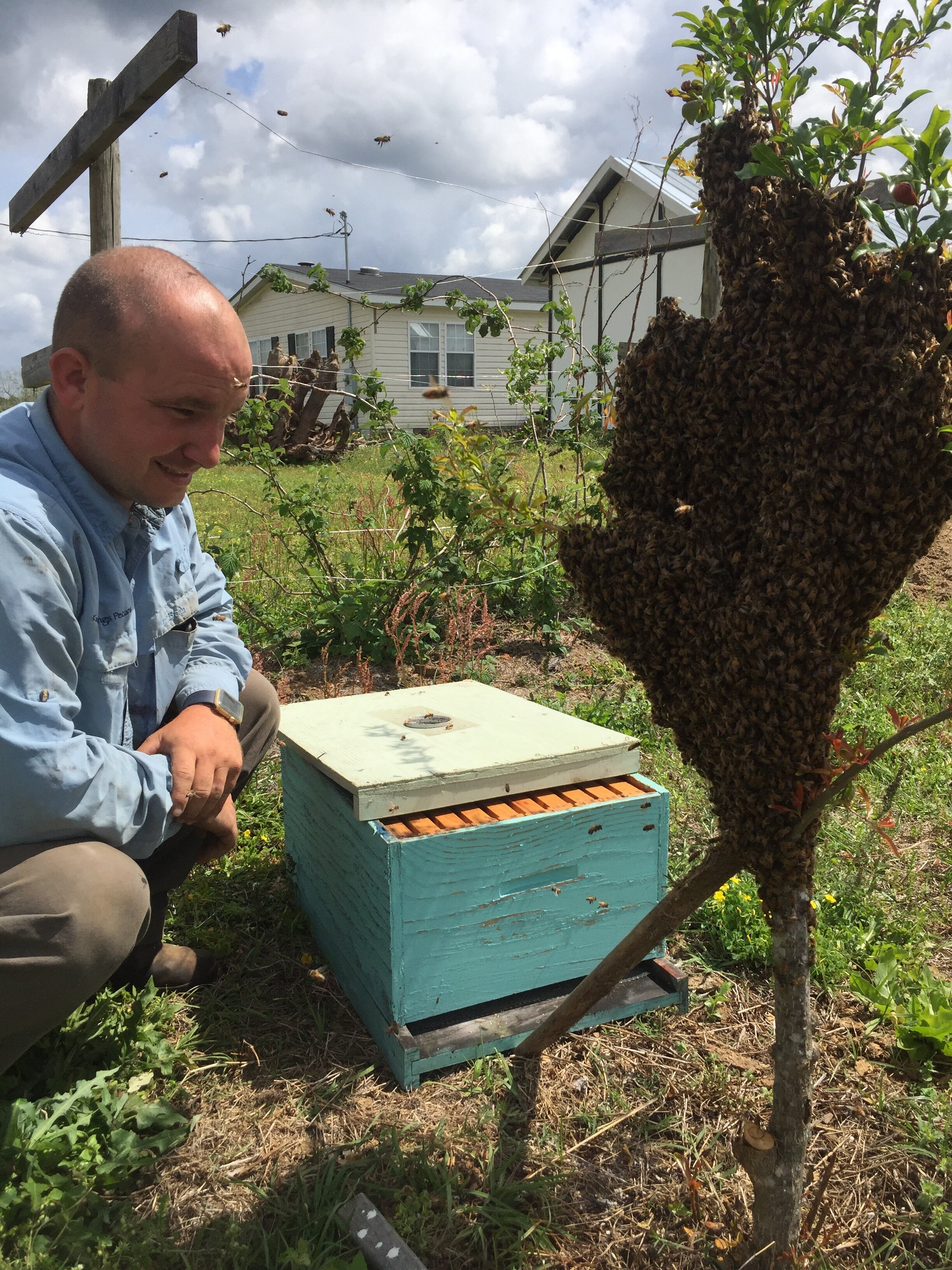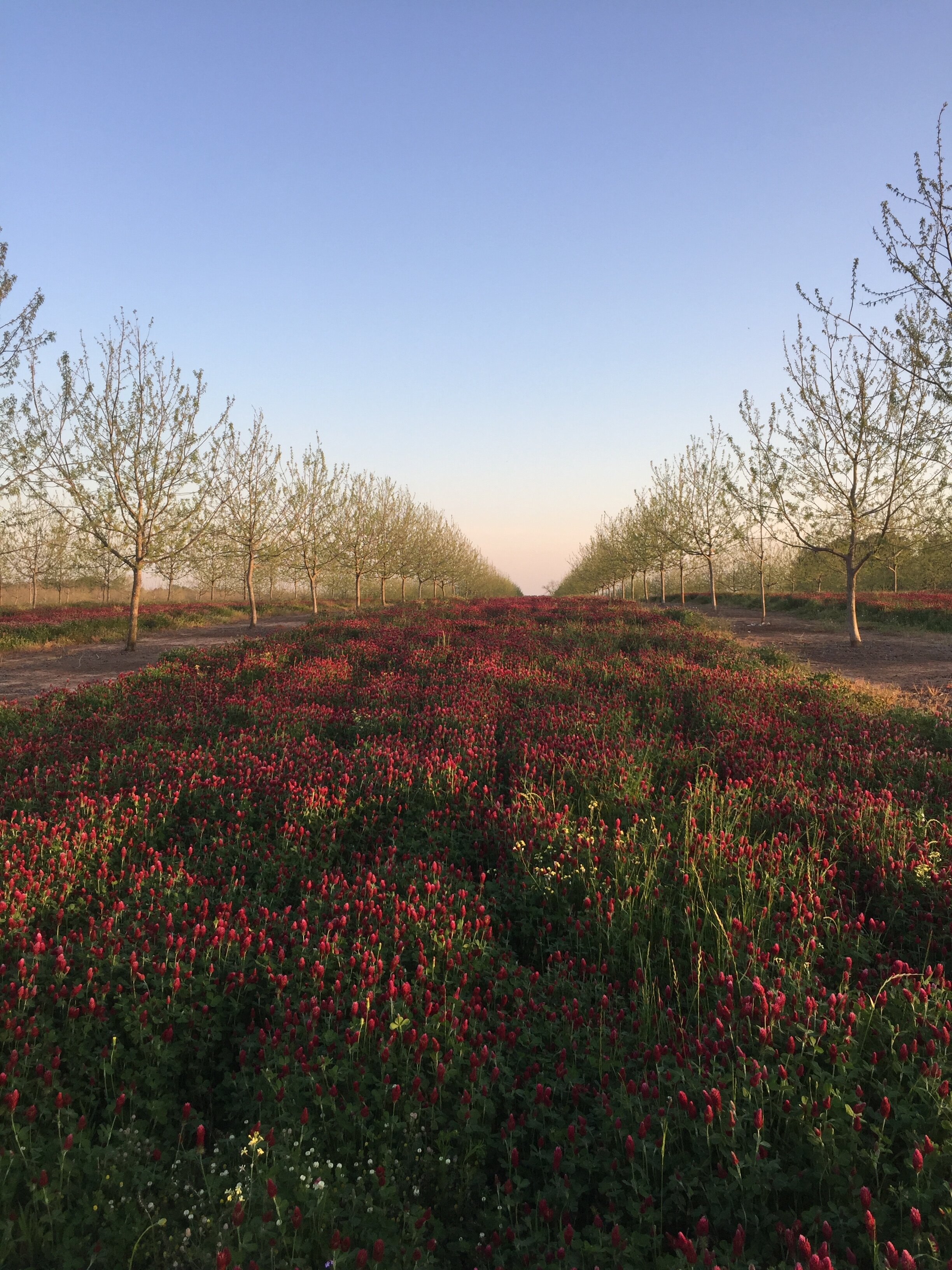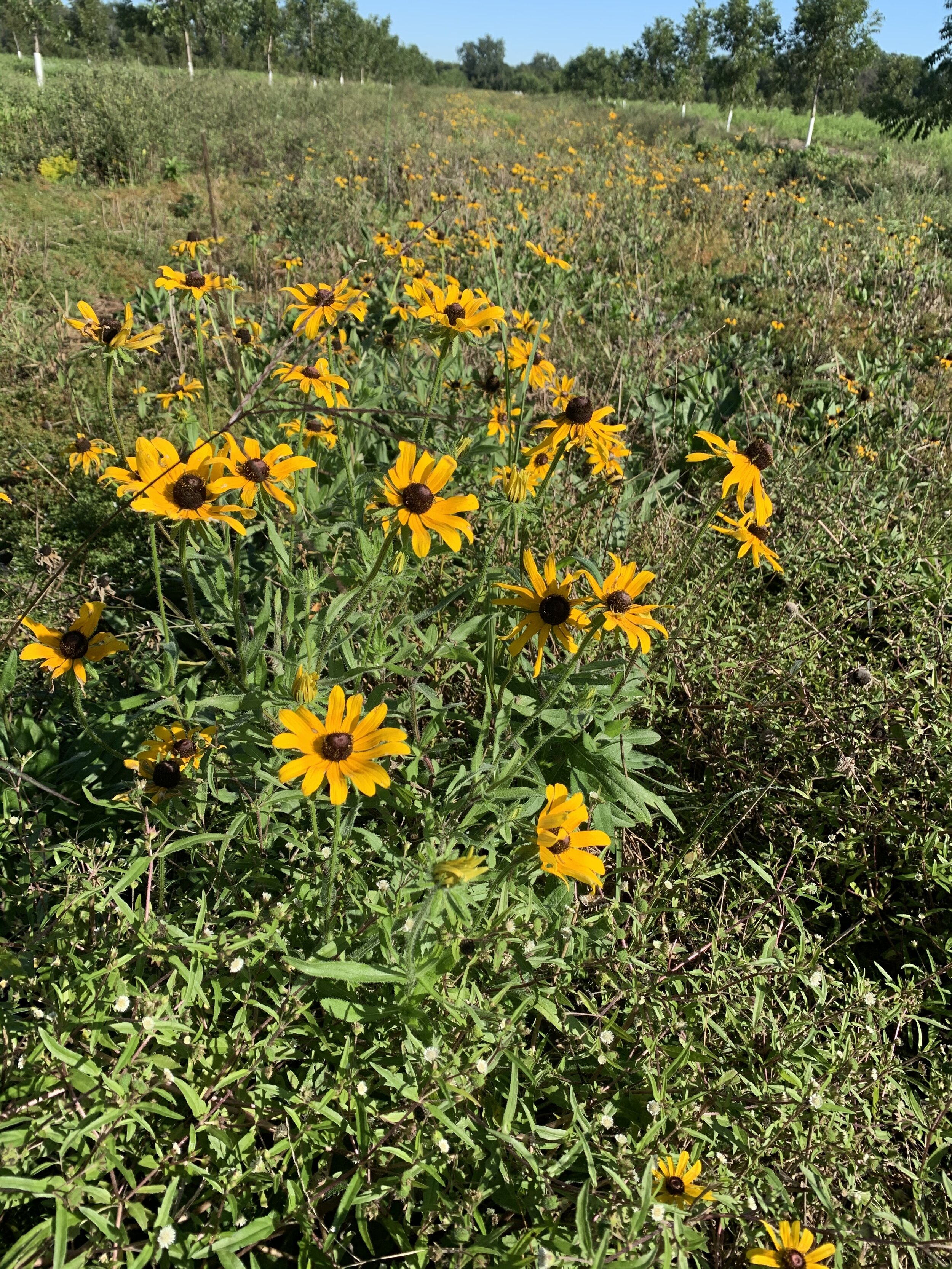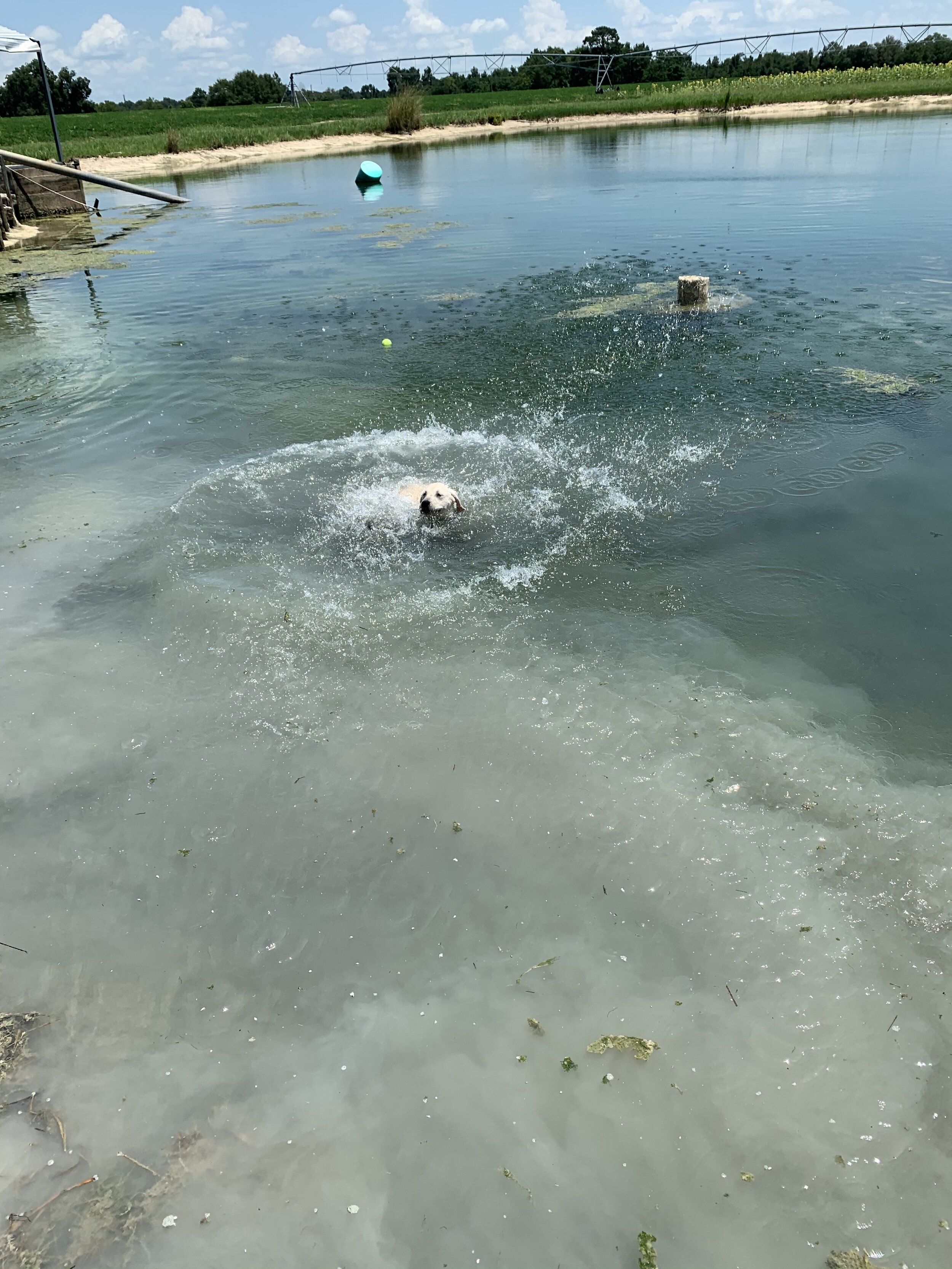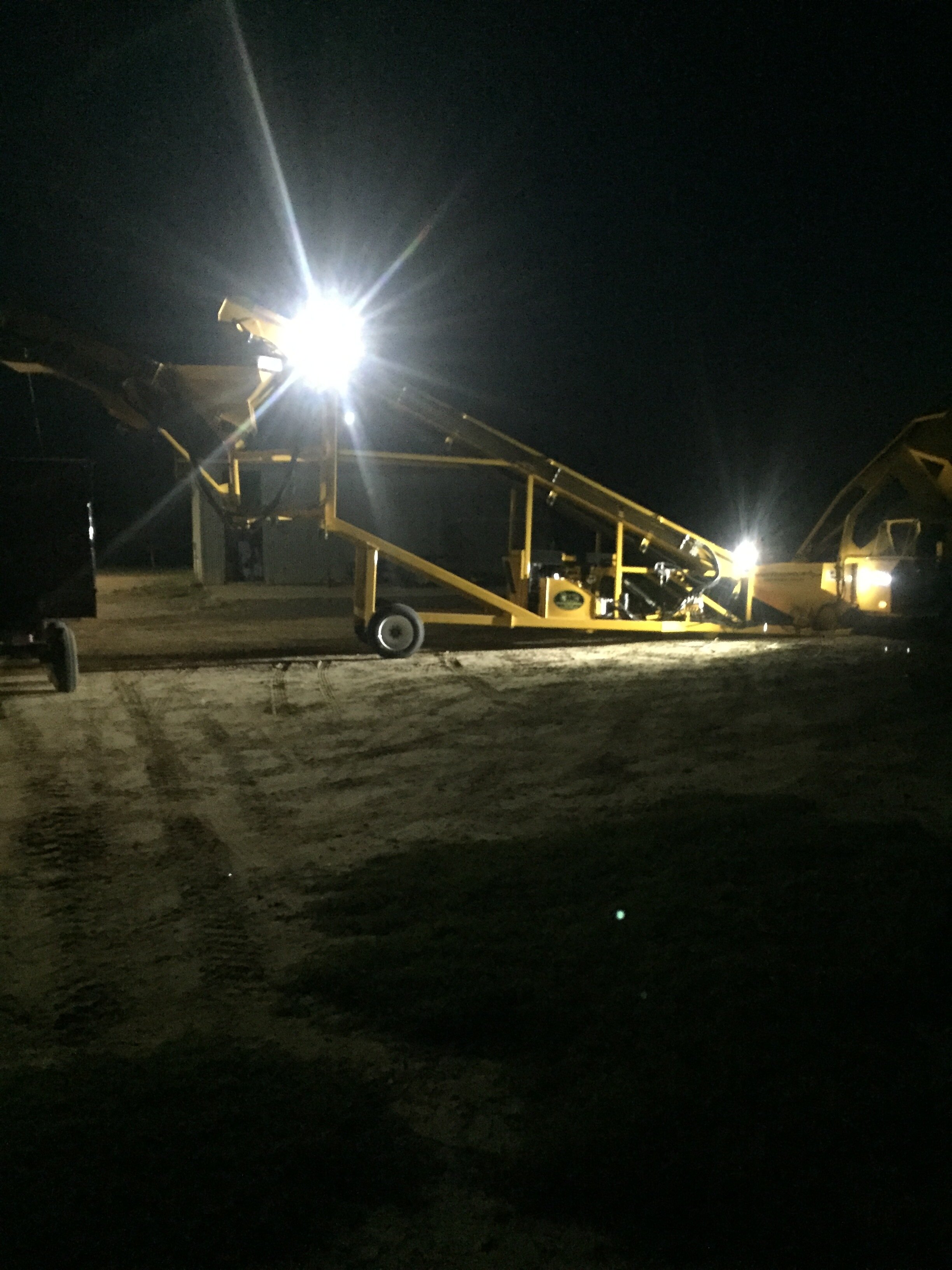Care of the Soil
When we bought the first part of our farm in 2011, we quickly realized that previous, traditional farming practices had negatively impacted the quality of the soil. The topsoil in this region has been reduced over the last 150 years as a result of over tilling the soil and a lack of adequate erosion control. We determined early on that the soil needed to be a farm focus, and we began by adjusting the soil’s ph through application of dolomite lime followed by seeking to rebalance the Nitrogen, Phosphorus and Potash (N,P&K) levels by using chicken litter from local chicken houses. We supplement this combination with other nutrients and with a program of redeveloping the humus (thatch) layer of the farm surface through limited cutting, planting winter cover crops of vetch and clover, and encouragement of native plants. The humus level development on our farm has helped contribute to a reversal of lost topsoil and new fertility across the farm’s enlarged 920 acres of productive orchard land.
Care of the Trees
The trees in the orchards (all 26,000 of them) are the focus of much of our work. In most ways, our work follows the principals of basic botany and science. Adequate water and sunshine are the primary building blocks. We do this by providing water through individual micro-jet irrigation to each tree. This is an elaborate system of wells and underground pipes but is water efficient and necessary. We achieve sunshine maximization through tree spacing (30’ x 50’), through selective pruning of branches and through hedging the outside of the trees into an obelisk shape. This all produces a center trunk, scaffold limbs (between 80 and 60 degrees from the trunk), shorter limbs and a tree height of around 38 feet. This allows us to maximize the trees’ energies in creating roots, leaves and nuts, and minimizes its energy producing limbs or growing too tall and shading out other trees.
We supplement the nutrition of the trees through applications of minor minerals (e.g. zinc and boron), the use of fertilizers (mainly chicken litter) and anti-fungal disease sprays, as necessary.
We have preferred to only use selective insecticides over the past 12 years on the trees, and those infrequently. Insecticides have the unfortunate consequence of killing every insect, not just the harmful insects. As an alternative, we use the natural enemies of our insect pests to rid our orchard of the unwanted pests. These are called beneficial insects and we seek to stimulate their populations through creating a habitat where they can thrive, mainly in the way we care for the soil and orchard floor (allowing more vegetation to exist in the orchard and to stimulate the variety of plant life and the incorporation of native plants on the orchard floor).
The Case for Crop Diversity
When we first started farming, we thought we wanted a monoculture of pecan trees and a monoculture of Bermuda grass as the orchard floor. Boy, were we wrong. One of our neighbors casually mentioned that “god hates a monoculture” and we were struck with the corollary of his statement that nature prefers diversity. It is true we have a monoculture of pecan trees, but we have worked to encourage a diverse orchard floor with native plants, many of whom have deep soil busting tap roots. We have also intentionally planted wildflowers throughout the farm as well as allowing one in seven rows between the trees to remain uncut for most of the year to encourage wild plants, insects, birds and small mammal habitat.


